It’s fall y’all, and orange perennial flowers are here to welcome the season.
Orange is the color of Halloween, autumn leaves, and jack-o-lanterns. But orange is more than that. It’s also the color of warmth and energy. If you’re looking to add a pop of color to your garden, consider planting some orange flowers. They’ll brighten up any space and make you happy every time you see them.
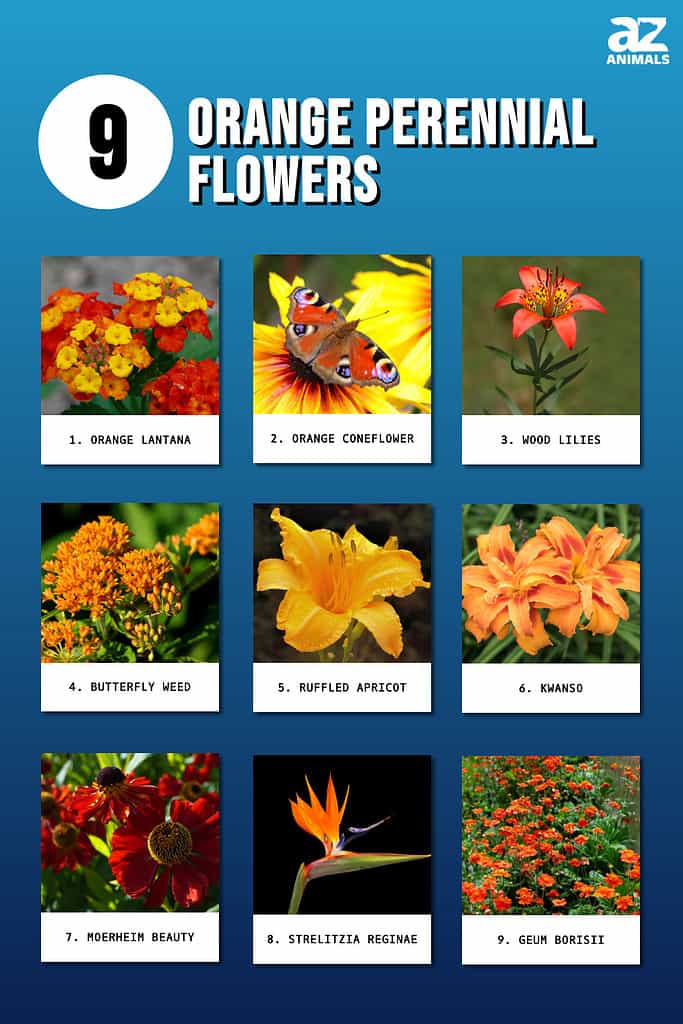
Add some orange to your life. Read on to learn about the best orange perennials in the garden or in the wild.
1. Orange Lantana

Orange lantana, or common lantana, is a bright and showy flower that is common in hanging baskets, gardens, and even as a houseplant.
©Cathleen Wake Gorbatenko/Shutterstock.com
There are a wide variety of orange perennial flowers to choose from, so you’re sure to find the perfect one for your garden. If you’re looking for a plant that will bloom all season long, consider orange lantana (Lantana camara). This tropical plant is perfect for hot, sunny spots in the garden and is rich in orange or yellow flowers from spring until fall. If you like the lantana and want something similar, there is another option for a long-blooming orange flower: the tiger lily (Lilium columbianum). These showy flowers appear in early summer and continue blooming into fall.
2. Orange Coneflower

Orange coneflowers are beautiful and vibrant plants.
©iStock.com/Mariia Romanyk
For a burst of color in early summer, try planting an orange coneflower (Rudbeckia fulgida). They’re one of the most versatile orange perennial flowers. The orange coneflower is a beautiful plant that has many uses. Not only does it provide nectar for bees and other pollinators, but it also makes a beautiful addition to any garden. The vibrant orange flowers are a perfect way to add a pop of color, and the plant is relatively easy to care for.
In addition, the orange coneflower is popular for its medicinal properties. A lot of the plants can be intercrossed, which could be a major benefit to the horticultural trade. One day superior forms of coneflowers like echinacea could exist.
The roots can make a tea that is effective in treating colds and flu. The flowers can also become an ointment that heals cuts and scrapes. As a result, this flower is an incredibly versatile plant that offers something for everyone.
3. Wood Lilies
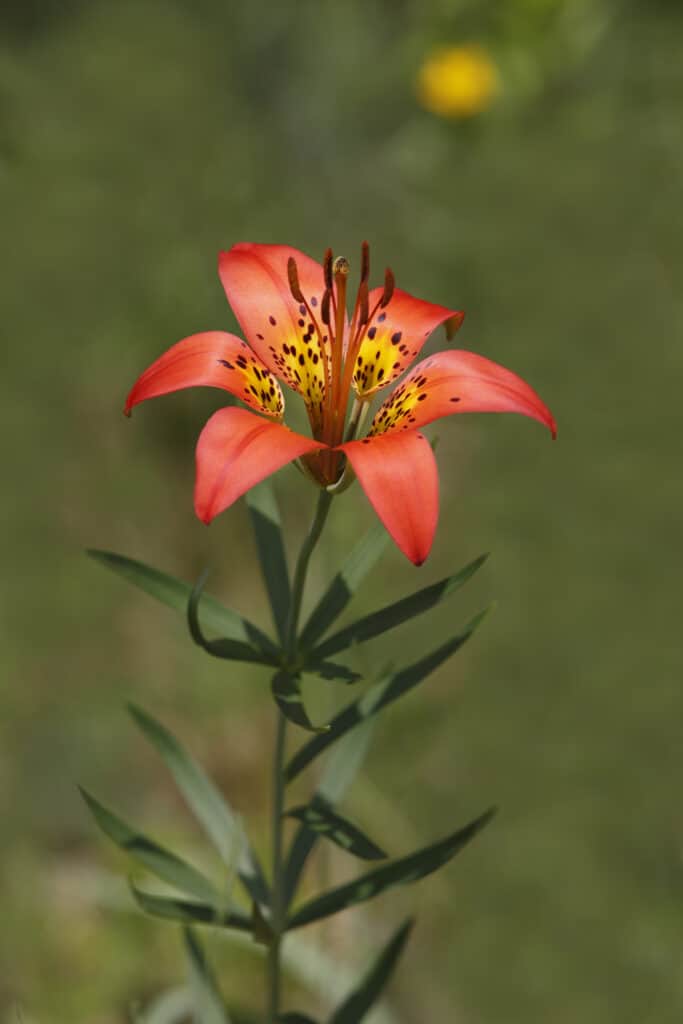
The wood lily (
Lilium philadelphicum) is also called the Philadelphia lily, western red lily, or prairie lily.
©iStock.com/BrianLasenby
What’s one of the most exciting orange perennial flowers that also attract pollinators? Wood lilies!
Lilies aren’t only stunning and fragrant, but they are also an essential part of the diet for swallowtail butterflies. The butterflies like the lilies’ bright colors and strong scent.
The lily’s blooms face straight up, with dark spots inside the petals. You can find them in a few places, but North Carolina and Nebraska give the lily its native range. It prefers partial shade and moist soil and can grow up to 3 feet tall. Propagate by dividing the bulbs in late summer. With proper care, they will bloom for many years to come.
4. Butterfly Weed
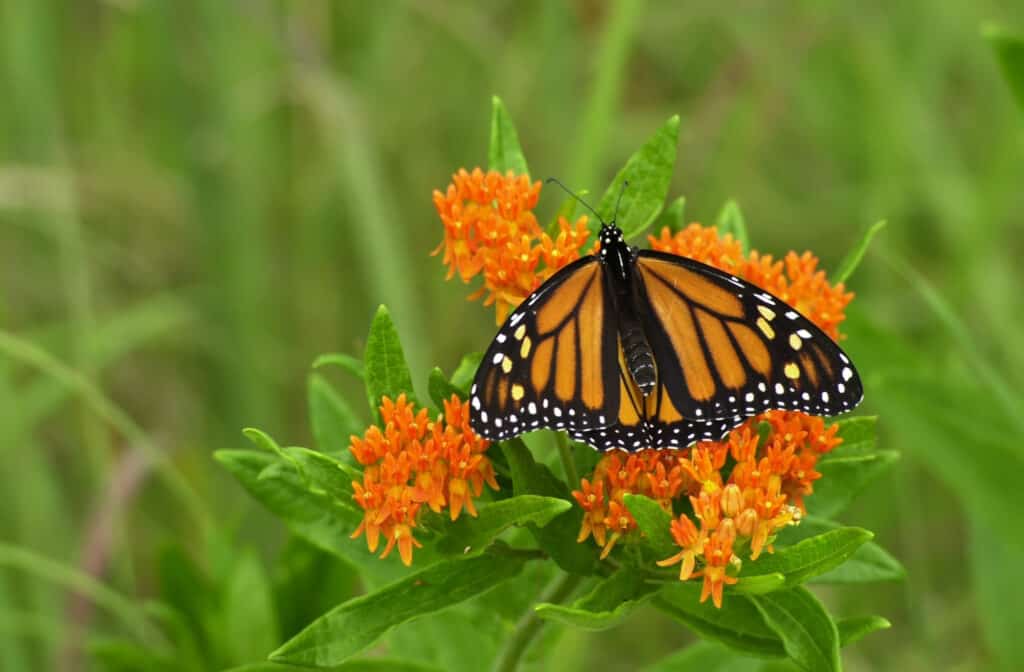
Butterfly Weed attracts Monarch
Butterflies, and is a food source for their larvae.
©iStock.com/mzurawski
Butterfly weed is a beautiful flower that not only attracts adult butterflies but also provides them with lots of nectar. The little bags of pollen that are often found on the flowers indicate that pollen has been stuck to the feet of the butterflies, which helps to spread it around. The narrow hairy leaves and clustered bright orange perennial flowers of the butterfly weed are quite distinctive, and it is easy to spot in grass sandy areas and drive fields.
The blooms usually appear from June to September. The butterfly weed prefers partial shade and moist soil. After establishing itself, it grows quite well. Growing it from seed is often the best option.
5. Ruffled Apricot
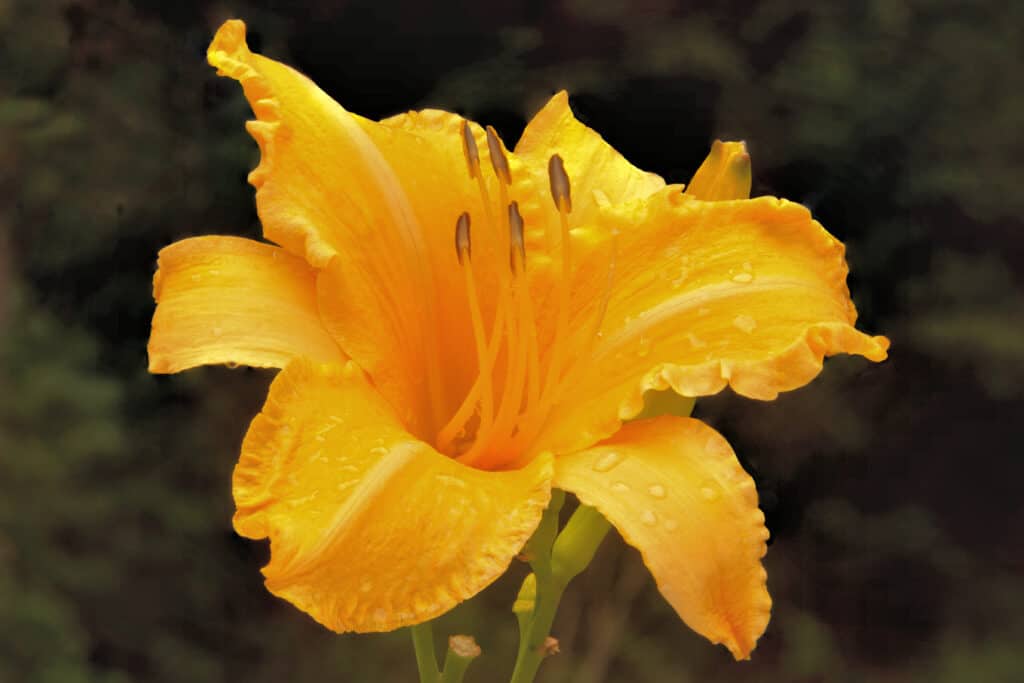
The beautiful Ruffled Apricot daylily blossom (Hemerocallis) is an award-winning flower with profuse blooms.
©iStock.com/Gerald G Gantar
The ruffled apricot is a slow-growing, clump-forming plant with large, midsummer blooms in deep apricot color. The ruffled, delicate petals have a lavender-pink midrib, and the leaves are strap-shaped and mid-green in color.
The stiff leaves help the plant to spread 26 inches and grow 20 inches tall. This plant is a great addition to any garden, and its unique coloring will surely stand out amongst other plants. When it comes to showing orange perennial flowers, the ruffled apricot is a winner.
6. Kwanso
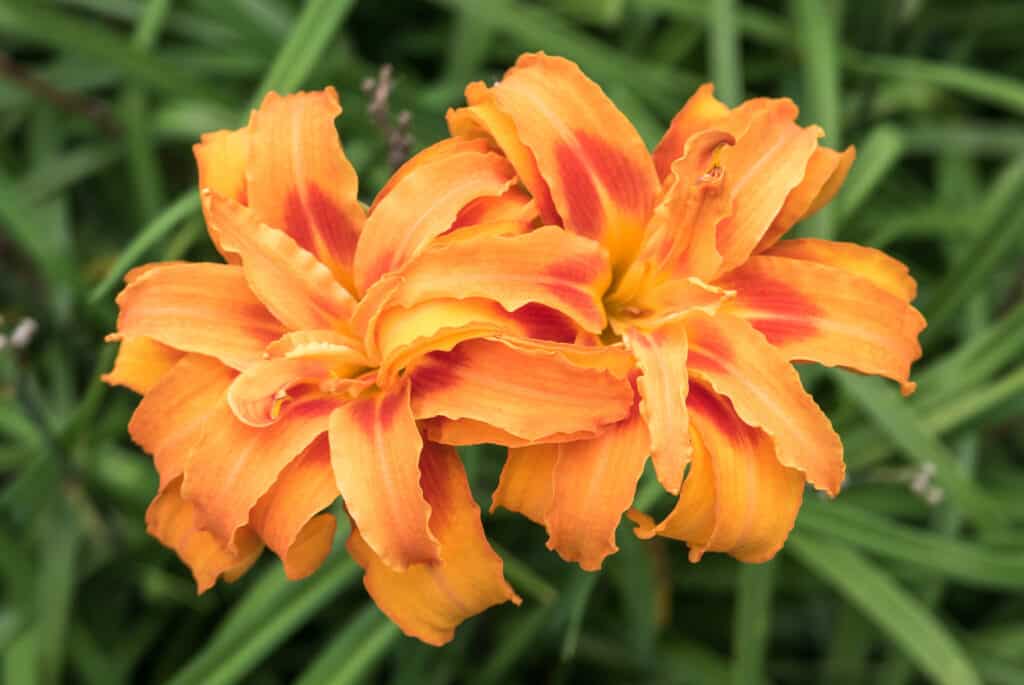
Not only are Kwanso Daylilies stunning, but they can also serve as a type of groundcover that helps with erosion control.
©iStock.com/lrosebrugh
Ah, the kwanso. Large, orange, and perennial, this flower is a true delight. With its trumpet-shaped blooms and strap-shaped leaves, it’s no wonder that this plant has gained such popularity in recent years. And yet, there is more to the kwanso than meets the eye. For one thing, it is quite vigorous, easily forming large mounds in any garden bed.
Additionally, these orange perennial flowers are resilient, and able to withstand both harsh winters and hot summers with ease. But perhaps the most delightful thing about the kwanso is its color. Tawny oranges are not often seen in nature, making this flower all the more special. If you’re looking for a plant that is truly exquisite, look no further than the kwanso.
7. Moerheim Beauty
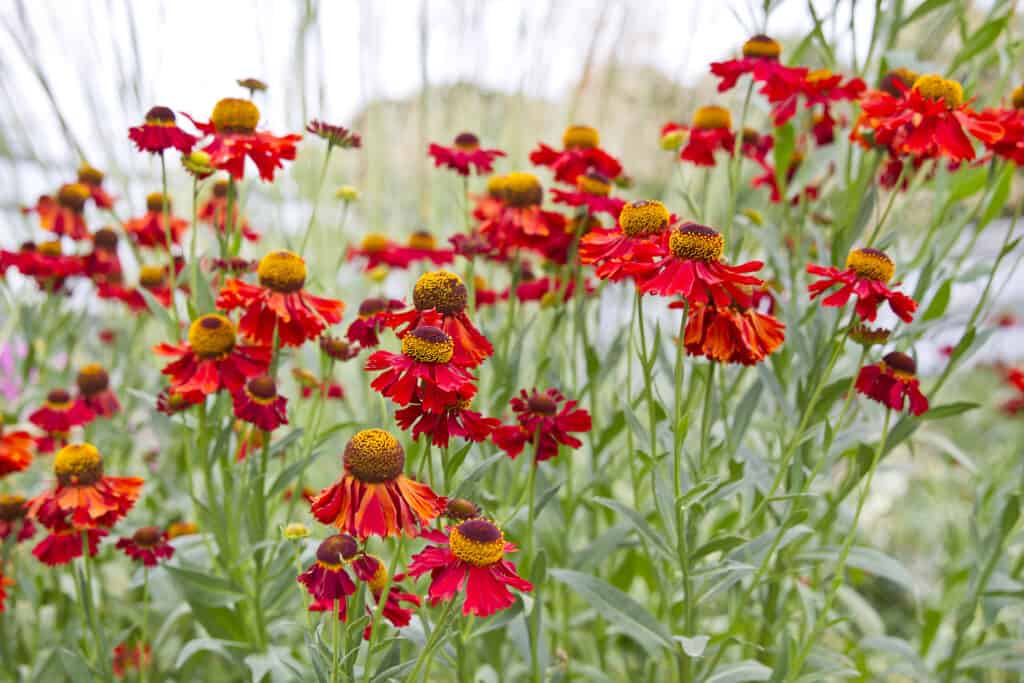
Moerheim Beauty is also called Helenium or Sneezeweed.
©iStock.com/sagarmanis
The moerheim beauty is a stunning clump-forming plant that is native to gardens. It has strong stems and large, daisy-like flowers that are early in the autumn season. The dark orange ray florets surround a round disc, and the lance-shaped dark green leaves make this plant a great addition to any summer border. This long-flowering plant is easy to grow and propagate, and it prefers full sun and well-drained soil. To keep the vigor of the plants, divide and replant them regularly. You can propagate the moerheim beauty by division in autumn or spring. When you’re looking for hardy orange perennial flowers, moerheim beauty makes sense.
8. Strelitzia Reginae
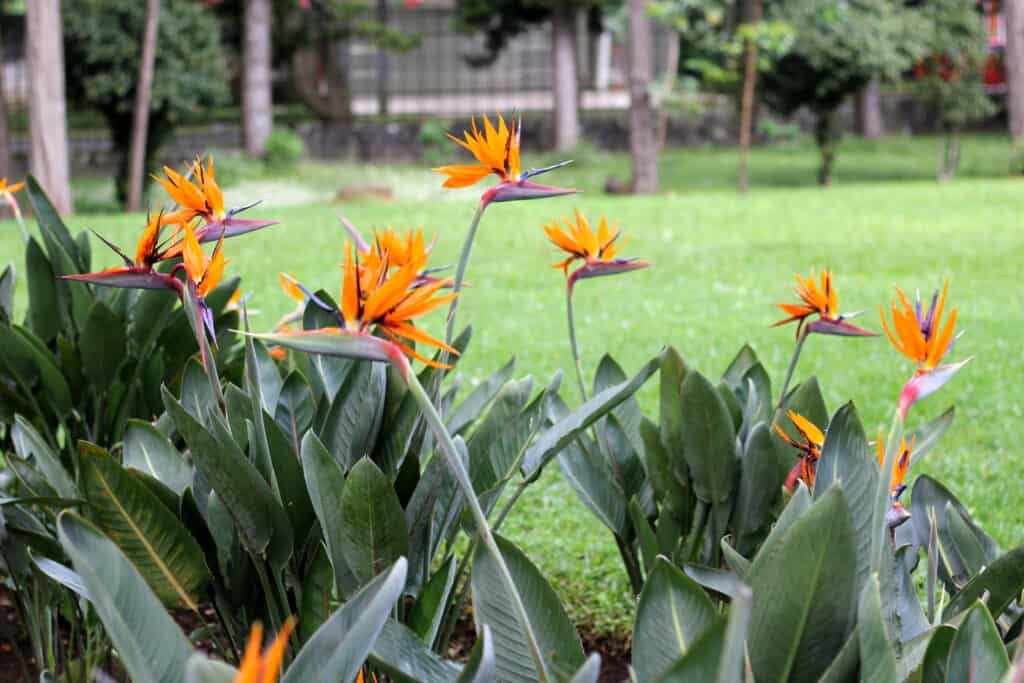
Strelitzia reginae, popularly called bird of paradise, is a herbaceous species native to South Africa. It is cultivated as an ornamental plant due to the peculiar shape of its flower
©iStock.com/Arlette Lopez
The strelitzia reginae is a clump-forming palm-like plant that speaks like the flowers are born in spring. The short-stemmed flowers are orange and blue, and the special enclosing keeps the flowers in a boat-like shape with a red-edged rack. The leaves are oblong and evergreen, growing up to 28 inches long, and they are blue-green.
This native South African plant makes a great houseplant! It needs well-drained soil and a high-quality potting mix, as well as partial shade. Water it freely during growth but sparingly during the winter season. Propagation is by suckers in spring.
9. Geum Borisii

Geum Borisii is native to northern
Turkey
.
©iStock.com/Anna Bogdanova
Geum borisii is an orange perennial flower that is native to damp meadows in Northern Turkey. It is a member of the Rosaceae family and is closely related to other flowers such as roses and strawberries. Geum borisii is an herbaceous plant that has graceful, branching stems that are slender in shape. The leaves of the plant are large and have an irregular lobe shape. They are also pale mid-green in color and have a smooth texture.
The flowers of the plant are orange in color and are cup-shaped. They bloom for long periods during the summertime and are very showy. Geum borisii prefers full sun and does best when it is in moist, well-drained soil. It is a very low-maintenance plant and does not require much care once it is established. Geum borisii makes an excellent addition to any garden and plays well with other yellow and blue flowered perennials. It can be propagated by division or by seed.
Summary of 9 Orange Perennial Flowers
| # | Perennial Flower | Sun Requirement |
|---|---|---|
| 1 | Orange Lantana | Full sun |
| 2 | Orange Coneflower | Full sun |
| 3 | Wood Lilies | Partial shade |
| 4 | Butterfly Weed | Partial shade |
| 5 | Ruffled Apricot | Full sun to partial shade |
| 6 | Kwanso | Full sun to partial shade |
| 7 | Moerheim Beauty | Full sun |
| 8 | Strelitzia Reginae | Partial shade |
| 9 | Geum Borisii | Full sun |
Thank you for reading! Have some feedback for us? Contact the AZ Animals editorial team.








